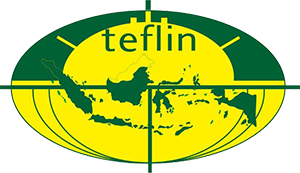Development of Teaching Material Vocabulary with the Mnemonic Keyword
Abstract
Keywords
Full Text:
PDFReferences
Ariani, N. & Haryanto, D. (2010). Pembelajaran multimedia di sekolah: Pedoman pembelajaran inspiratif, konstruktif, dan prospektif. Jakarta: Prestasi Pustaka.
Atkinson, R.C. (1975). Mnemotechnics in second-language learning. Journal American Psychologist, 30, 821-828.
Benge, C., & Robbins, M. E. (2009). Using keyword mnemonics to develop secondary students’ vocabularies: A teacher’s action research. Journal of Language and Literacy Education, 6, (1), 93-104.
Hackman, S. (2008). Teaching effective vocabulary: What can teachers do to increase the vocabulary of children who start education with a limites vocabulary?. New York: Children, schools and families.
Jensen, Eric. 2002. Otak Sejuta Gigabyte.Bandung: Kaifa.
Keskinkiliç & Sünbül. (2011). The effects of mnemonic key word method on science lessons: access and attitude of students. International Journal on New Trends in Education and Their Implications, 2, (4), 1-8 ISSN 1309-6249.
Norbert schmitt and Michael McCarthy.(2000).Vocabulary:description,Acuisition and Pedagogy. New york: Cambridge University Press.
Rahmawati, D., Sunaryo., & Widodo. (2012). Penguasaan kosakata bahasa Indonesia pada anak usia prasekolah. Jurnal Bahasa dan Sastra, 1, (1), 1-12.
Samsiyah, S., Andayani., & Rohmadi, M. (2013). Hubungan antara penguasaan kosakata dan motivasi belajar dengan kemampuan membaca cerita (survei pada siswa kelas V SD negeri di kecamatan jatiroto). Jurnal Pendidikan Bahasa dan Sastra, 1, (1), 27-36.
Sugiyono.( 2009). Metode Penelitian Pendidikan. Bandung: Alfabeta.
Virginia french Allen.(1983). Techniues in teaching vocabulary.Oxford:Oxford University Press.
DOI: http://dx.doi.org/10.21043/jetli.v1i2.3889
Refbacks
- There are currently no refbacks.
Copyright (c) 2019 Journal of English Teaching and Learning Issues







